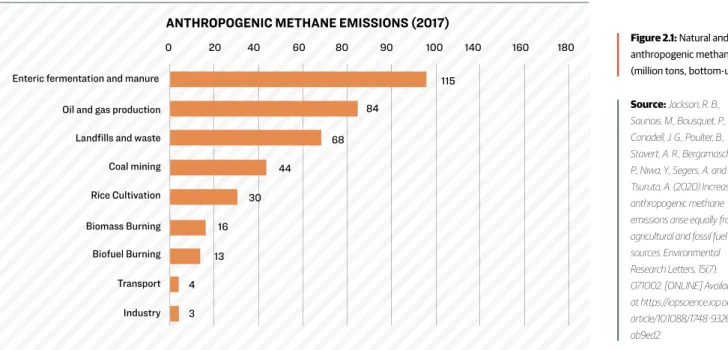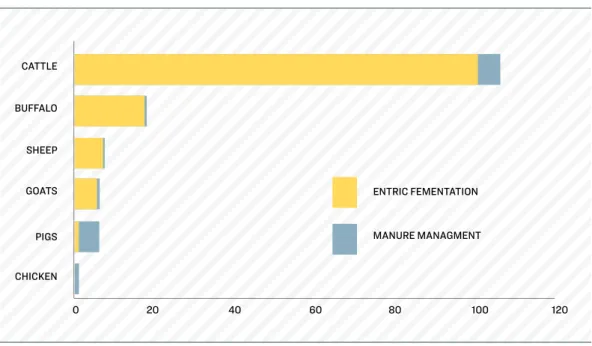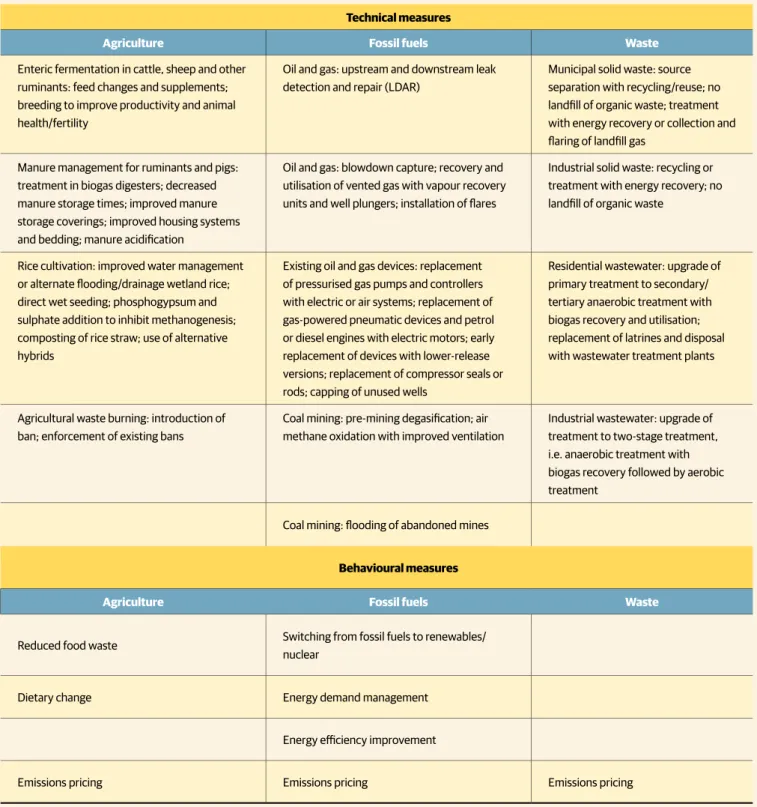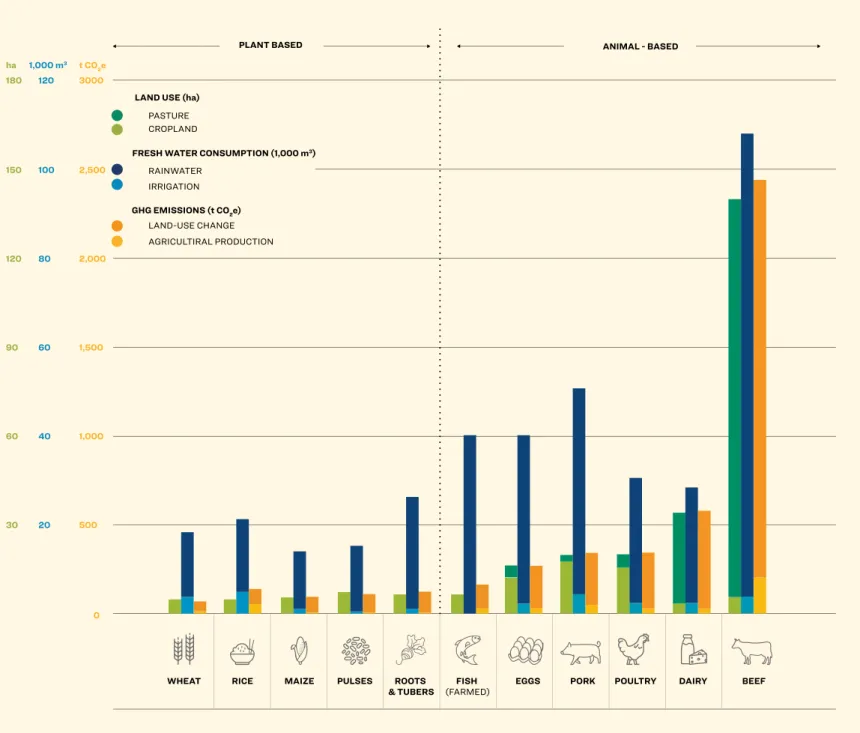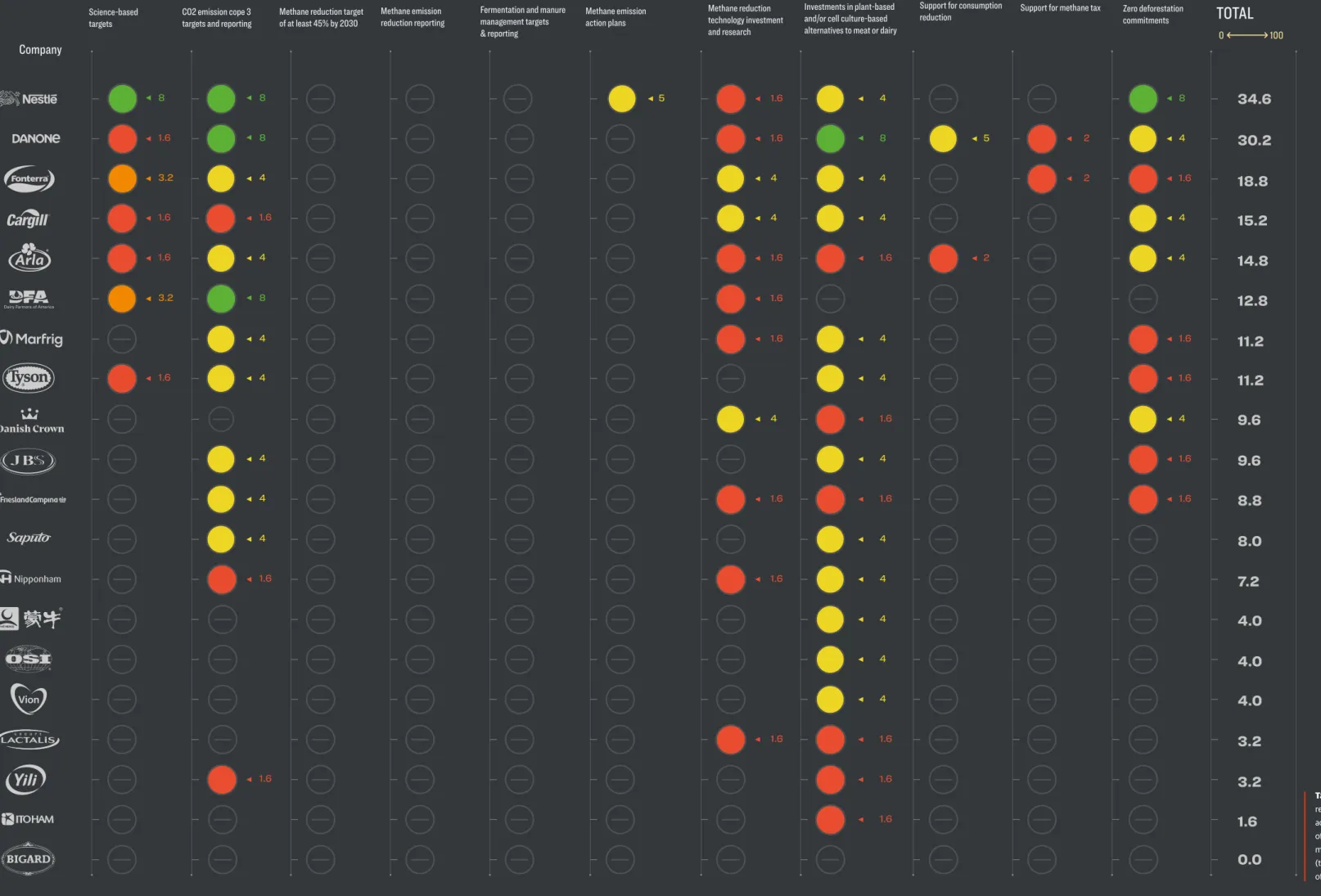They fail to set ambitious goals and implement measures to reduce methane emissions in the livestock sector. WHY WE NEED TO REDUCE METHANE EMISSIONS QUICKLY: THE SCIENCE | 17 16 | INTRODUCTION: LIFE IN EXTRAORDINARY CLIMATE CONDITIONS.
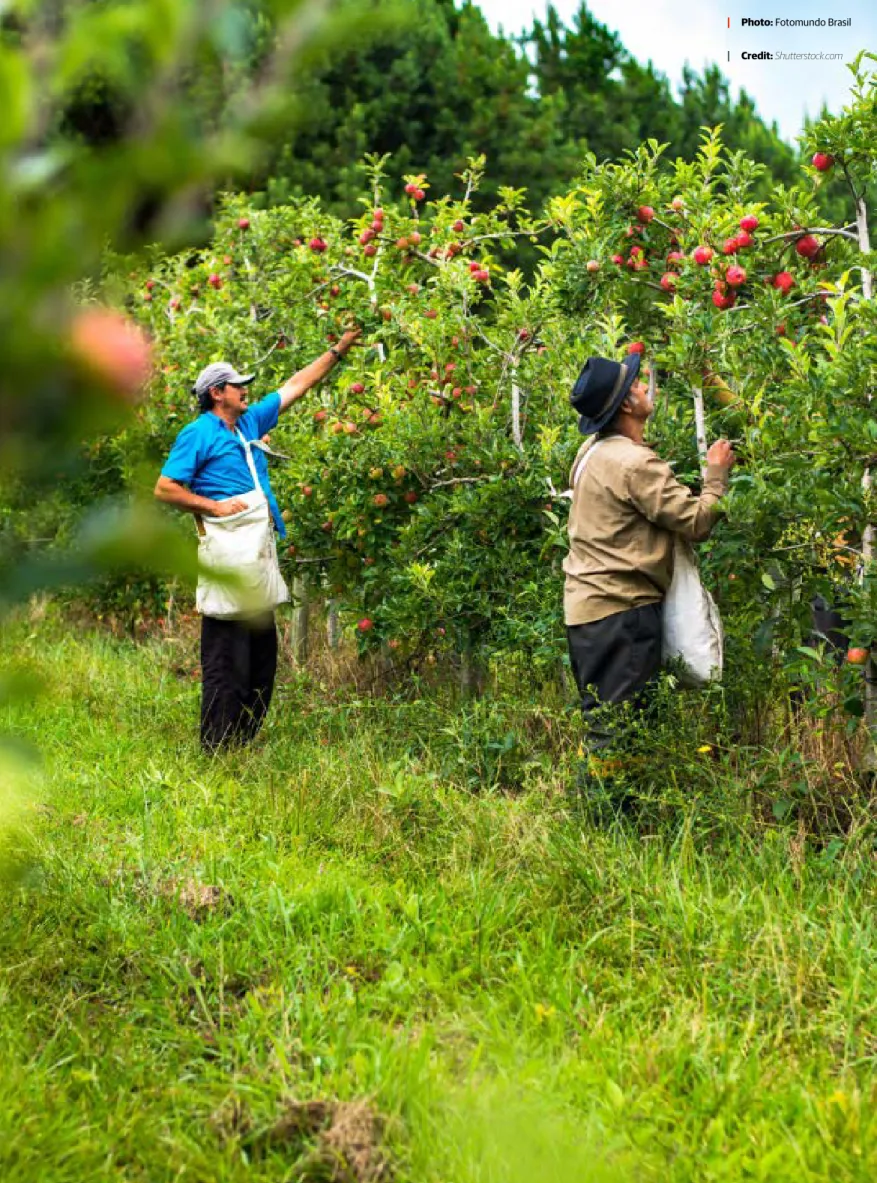
FOSSIL FUEL PRODUCTIONS
WHY WE NEED TO QUICKLY REDUCE METHANE EMISSIONS: THE SCIENCE | 21 20 | WHY WE NEED TO QUICKLY REDUCE METHANE EMISSIONS: THE SCIENCE. Blindspot: How Lack of Action on Livestock Methane Undermines Climate Goals Blindspot: How Lack of Action on Livestock Methane Undermines Climate Goals
AND USE
TOTAL EMISSIONS
TOTAL SINKS
GLOBAL METHANE BUDGET 2017
AGRICULTURE
BIOFUEL BURNING WETLANDS OTHER NATURAL
ATMOSPHERIC CH 4 GROWTH RATE
EMISSIONS AND SINKS
CHEMICAL REACTIONS IN THE ATMOSPHERE
SINK IN SOIL
Methane emissions by sector
As shown in Figure 2.1, the livestock sector is the largest single contributor to anthropogenic methane emissions. Onshore conventional gas and downstream gas each accounted for another 21% of methane emissions within the oil and gas sector.62.
Geographical distribution of methane emissions
More than 30% of all anthropogenic methane emissions are estimated to originate from enteric fermentation and manure handling. In comparison, oil and gas production accounts for 22%, landfills and waste for 18%, and 12% of all non-natural methane emissions are attributed to coal mining.
Methane mitigation options
This translates to up to 4% of global GHG emissions. 63, 64 The largest contributor to emissions within the waste sector is solid waste in landfills: 50% of waste-related methane emissions are associated with solid waste. municipal. WHY YOU NEED TO REDUCE METHANE EMISSIONS FAST: THE SCIENCE | 25 24 | WHY WE NEED TO FIX METHANE EMISSIONS FAST: THE SCIENCE.
Geographical zones of methane emissions
GEOGRAPHICAL DISTRIBUTION OF METHANE EMISSIONS BY SECTOR
Livestock methane emissions and impacts
The ruminant livestock and manure sub-sector is the single largest contributor to anthropogenic methane emissions, generating more than 30% of all methane emissions linked to human activities. Source: UNEP and Climate and Clean Air Coalition (2021) Global methane assessment: Benefits and costs of reducing methane emissions.
Consumption of beef and milk (excluding butter)
WHY WE NEED TO QUICKLY REDUCE METHANE EMISSIONS: THE SCIENCE | 29 28 | WHY WE NEED TO QUICKLY REDUCE METHANE EMISSIONS: THE SCIENCE.
AUSTRALIA
ARGENTINA
URUGUAYBRAZIL
SWITZERLAND
GERMANY
DENMARK
ETHIOPIA
INDIAMEXICO
NETHERLANDS
FRANCEUNITED KINGDOM
NEW ZEALAND
ETHIOPIA 28.2
ARGENTINA 55.44 BRAZIL 37.47
AUSTRALIA 28.21 CANADA 26.78
DENMARK 23.52 NEW ZEALAND 21.15
SWITZERLAND 18.62 UNITED KINGDOM 17.8
MEXICO 15.06 GERMANY 14.79
ETHIOPIA 3.71
PER CAPITA PER YEAR IN 18 COUNTRIES ASSESSED IN THE REPORT
WHY WE NEED TO REDUCE METHANE EMISSIONS FAST: THE SCIENCE | 31 30 | WHY WE NEED TO REDUCE METHANE EMISSIONS FAST: THE SCIENCE. Between 2001 and 2015, cattle grazing replaced about 45 million hectares of forested land (an area roughly the size of Sweden).
ENVIRONMENTAL IMPACTS PER TON OF PROTEIN CONSUMED
Lack of action among major methane-emitting countries
- What actions are countries taking on methane emissions?
- Reporting and methane emission reductions
- Livestock methane emissions and targets
- Upcoming policies
- Most NDCs lack concrete measures to drive healthier diets and better food-production systems
At the other end of the spectrum, the Netherlands reported a 6.5% increase in livestock-related methane emissions over the same period. Only two of the assessed countries have committed to specific targets for livestock-related methane emissions according to their submissions to the UNFCCC. Furthermore, neither its historic methane emissions from lower than current levels) nor its very small methane reduction of 1.9% in the last five reported years gives confidence that New Zealand will be able to meet its already low target, particularly in light of the local meat and dairy industry's reluctance to trade.
Country has shown that absolute methane emissions from enteric fermentation and manure management have been reduced by at least 15% in the last five years, most recently reported. Country has shown a reduction of at least 25% in livestock methane emissions between 1990 and the last reported year. New Zealand, which ranks in the top 30 countries in gross domestic product (GDP) per capita,93 is an example of the lack of progress in achieving reductions in methane emissions from livestock farming.
THE LARGEST MEAT AND DAIRY COMPANIES' LACK OF ACTION ON METHANE EMISSIONS | 43 42 | LACK OF ACTION AMONG MAJOR METHANE EMITTING COUNTRIES.
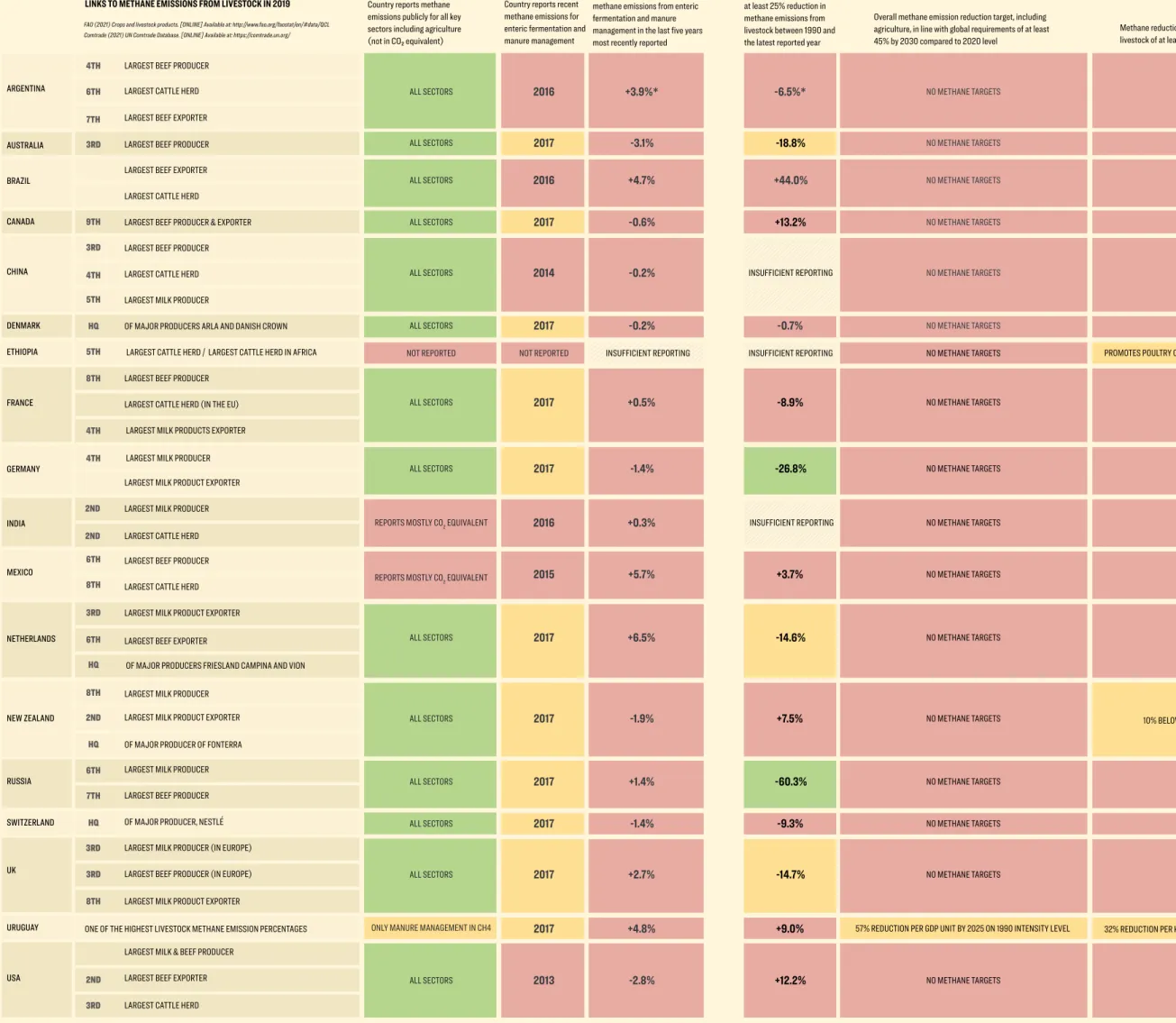
The biggest meat and dairy companies’ lack of action on
- Overall results
- Overall greenhouse gas emission reporting
LACK OF ACTION BY THE MAJOR MEAT AND DAIRY COMPANIES ON METHANE EMISSIONS | 45 44 | LACK OF ACTION BY THE LARGEST MEAT AND DAIRY COMPANIES ON METHANE EMISSIONS. The eight European companies included in the analysis had an average of 13.2%, the two South American companies 10.4%, the five North American companies 10.2%. Companies found to include scope 3 emissions across all their operations in their reporting and targets include Nestlé, Danone and Dairy Farmers of America.
However, a 2020 report found that 13 of the world's largest dairy corporations emit more GHG than major polluters such as BHP, the Australia-based mining, oil and gas giant, or ConocoPhillips, the oil company based in in the US.160 An earlier landmark report by GRAIN and IATP found that the five largest meat and dairy producers (JBS, Tyson, Cargill, Dairy Farmers of America and Fonterra) emit more climate-damaging GHGs than oil giants such as Exxon or Shell.161. The figures become even more startling if the emissions of meat and dairy companies are compared to those of the countries where they are headquartered. Similarly, in Denmark, the combined global emissions of Arla and Danish Crown would exceed the country's emissions target.162 In the Netherlands, just two meat and dairy companies would represent 31% of the country's NDCs.
THE LARGEST MEAT AND DAIRY COMPANIES WITH METHANE EMISSION SHORTAGE | 47 46 | FAILURE TO ACT BY THE LARGEST MEAT AND DAIRY COMPANIES REGARDING METHANE EMISSIONS.
JAPAN
UNITED STATESCANADA
BRASIL
CHINA
NEW ZELAND
NEW ZELANDBRASIL
CHINACHINA
JAPANJAPAN
NEW ZELANDNEW ZELAND
FRANCE SWITZERLAND SWITZERLAND SWITZERLAND SWITZERLAND
NETHERLANDSNETHERLANDS
134.4 BILLION
BILLION
BILLION43.2 BILLION
BILLION
BILLION
BILLION
BILLION
BILLION
BILLION7.9 BILLION
11 BILLION
BILLION
BILLION
BILLION
BILLION
BILLION
Emissions and revenues of 20 meat
Methane emission targets and reporting
While some of the assessed companies report emissions as CO2 equivalents and include methane emissions along their supply chain within this, none of the 20 companies provide specific figures for methane emissions. Furthermore, none of the top ten meat producers and processors, nor their top ten counterparts in the dairy sector, have meaningful and concrete targets or action plans to specifically reduce methane emissions in their operations and value chains. The company closest to developing commitments similar to a methane action plan is Nestlé.
Although the dairy giant does not report methane emissions from enteric fermentation or manure handling, the company predicts as part of its Net zero plan that it will reduce total emissions by 3.2 million tonnes of CO2 equivalent by 2030 by reducing the amount of methane produced by animals. during digestion by changing the diet.167 Although Nestlé says it will achieve this by supporting "innovation in rumen modification that reduces emissions, mainly through the inclusion of feed additives and nutritional supplements, through dedicated research and development (R&D) support" ,168 this does not represent a detailed action plan or include any milestones or key performance indicators. 169 Although Nestlé may be slightly ahead of other companies, the action plan, which relies on future, not yet commercial technologies to reduce methane emissions, does not address the urgent need to reduce methane emissions from milk production and their impact on global warming.
Support for policy measures and legislation
Research into and promotion of alternatives
- Investments in meat alternatives
- Investments in methane abatement research
FAILURE TO ACT BY THE LARGEST MEAT AND DAIRY COMPANIES REGARDING METHANE EMISSIONS | 51 50 | FAILURE TO ACT BY THE LARGEST MEAT AND DAIRY COMPANIES REGARDING METHANE EMISSIONS. Just over half of the companies assessed make meaningful investments in research on methane emissions reductions, but none of them disclose the level of funding they provide for such research efforts. This lack of reporting makes it difficult to gauge the extent of their commitment to funding research that could lead to breakthroughs in methane reduction technologies for livestock.
Fonterra is investigating the potential of seaweed as a feed additive that can lower methane emissions from enteric fermentation, and the company has trademarked the term Kowbucha after trials with probiotics to reduce methane production in cows showed promising results.197 Danish Crown is involved in the Future Beef project, which seeks to identify beef bulls that produce crossbred calves that utilize feed more efficiently, yield more meat and emit less methane.198 It remains unclear how close these technical measures are to being widely commercially available and scalable. , or what impact it will have on methane emissions when widely applied outside the laboratory. The study also acknowledges that 'absolute reductions in emissions will become a necessity as the world moves towards carbon neutrality by 2050', but argues that 'the mitigation potential of the sector is limited because, as a biological process, emissions will always be generated '. Even if this initiative is an acknowledgment by the industry that immediate reductions in methane emissions may hold the key to slowing the impacts of climate change, the vague language and lack of concrete commitments reveal that this is just another of the industry's delaying tactics.
THE LARGEST MEAT AND DAIRY COMPANIES' LACK OF ACTION ON METHANE EMISSIONS | 53 52 | THE LARGEST MEAT AND DAIRY COMPANIES' LACK OF ACTION ON METHANE OUTPUT.
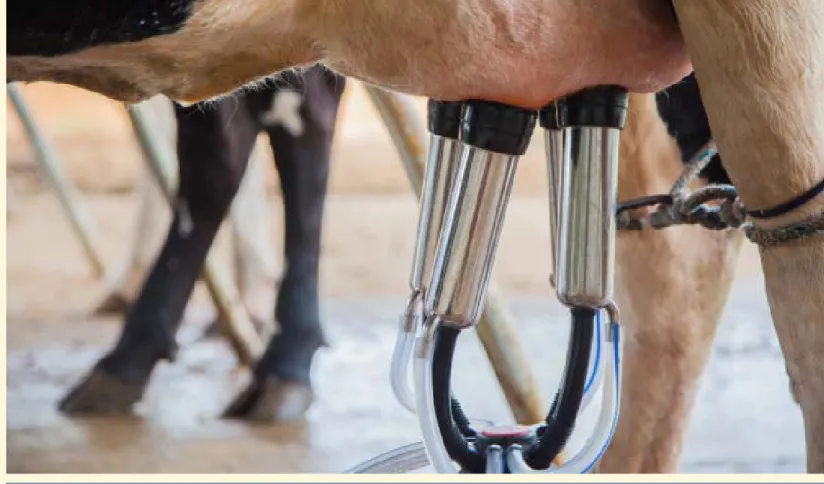
METHANE POLICY AND ACTIONS-ASSESSMENT OF 20 TOP DAIRY AND MEAT COMPANIES
SCORE OUT OF 100)
Conclusions and recommendations
- Recommendations for governments
- Supply side measures
- Demand side measures
- Fiscal measures
- Recommendations for companies
- Company actions
While some of the biggest meat and dairy companies are making general climate commitments, their lack of action on methane is very worrying. They should adopt similar strategies for a transition to less and better meat and dairy production and consumption with specific time-bound targets. This remainder of this section explores some broad measures that governments should take to drive the transition to less and better meat and dairy products.
A reduction in the number of animals is of crucial importance for the reduction of livestock emissions in the transition to better meat and dairy. Governments should consider introducing fiscal measures to reduce their citizens' consumption of meat and dairy products. Invest in alternative protein production and draw up a specific plan to reduce sales of conventional meat and dairy.
Our analysis shows that most companies have some investment in plant-based or cultured alternatives to meat and dairy products.
THE BIGGEST INVESTORS IN MEAT AND DAIRY
Recommendations for consumers
In terms of individual actions, reducing one's consumption of meat and dairy is one of the more effective climate decisions one can make. Being vegan for two-thirds of meals reduces emissions by 60%, while absolute veganism reduces emissions by 85%.274 However, even reducing meat consumption in accordance with dietary health guidelines will bring major health and environmental benefits and, if many consumers such consumers accept. behavior, can send an important signal to governments to adopt progressive food and farming policies. Put pressure on retailers and consumer goods companies to offer more plant-based options and to reduce sales of meat and dairy;.
Support small agro-ecological farms through vegetable box schemes as they are associated with increased vegetable consumption, higher productivity, lower waste, and reduced emissions and environmental impact.
Annex: Company assessment methodology
- Company sponsors research into technical solutions for methane abatement,
- Company is involved in projects or investments that focus on plant-based and/
- Company publicly supports the reduction of meat and/or dairy consumption
- Company supports a methane tax that includes the livestock sector or supports
- Company has a zero deforestation commitment that includes the feed
- Company has adopted a science-based target for GHG emission reductions
- Company targets and reporting include CO 2 emission equivalent, including scope 3
- Company has a specific methane reduction target of at least 45% by 2030
- Company reports progress publicly and annually on methane emissions or
- Methane-specific commitments and reporting include specific targets
- Company has a detailed action plan for meeting its methane reduction
- References
ONLINE] Available at: https://www.ipcc.ch/report/ar6/wg1/downloads/report/IPCC_AR6_WGI_. ONLINE] Available at: https://www.carbonbrief.org/scientists-con-cerned-by-record-high-global-methane-emissions. ONLINE] Available at: https://www.nestle.com/media/news/nestle-explores-emerging-technologies-cultured-meat.
ONLINE] Available at: https://www.tabledebates.org/building-blocks/methane-and-sustainability-ruminant-livestock.

